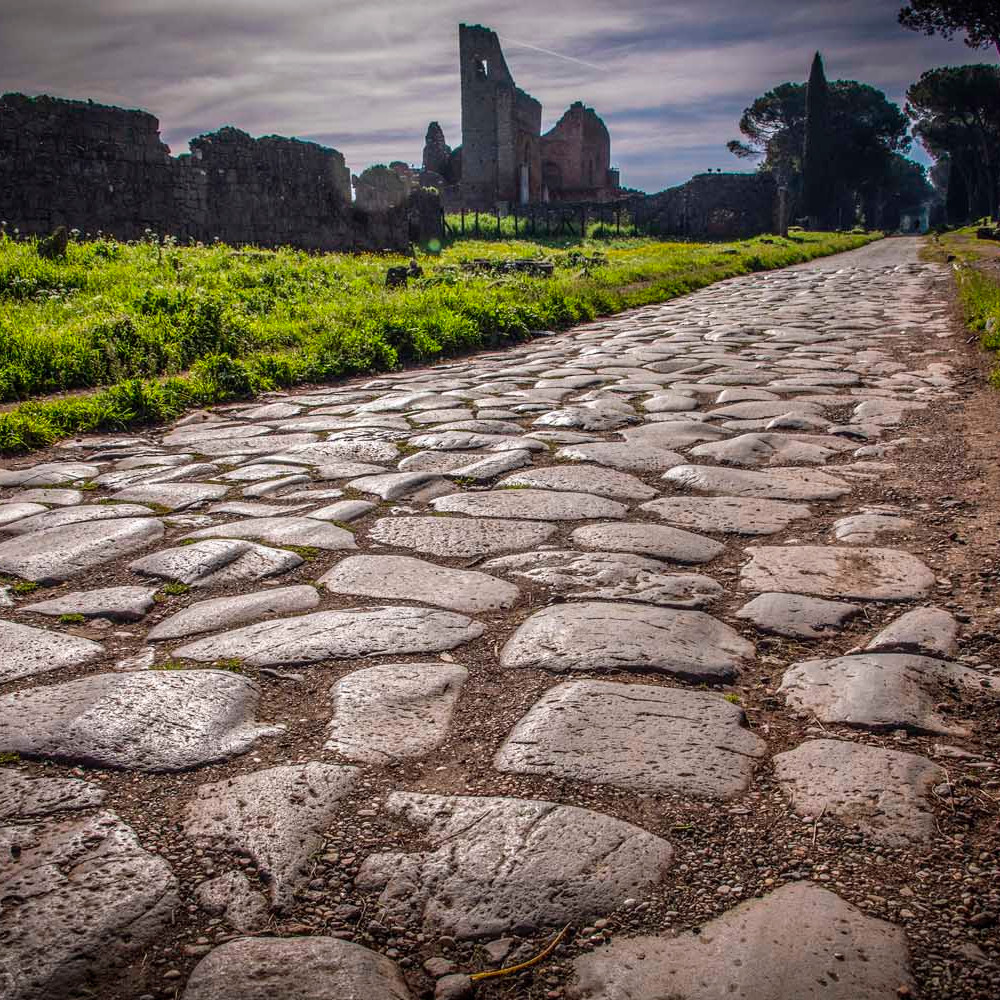L’Appia Antica in bici ripercorre nel tempo circa 23 secoli. Correva l’anno 312 A.C. , quando il Console romano Appio Claudio Cieco decise di costruire la prima grande via romana. Una lunghissima linea retta che da prima congiunse Roma ai Colli Albani e poi si allungò fino a Capua. Nel 268 A.C. la Via Appia raggiunge Maleventum, da allora rinominata Beneventum. Fin quando, nel 198 A.C. con l’arrivo a Brundusium (l’attuale Brindisi), l’Appia collegò direttamente Roma con il Mediterraneo. L’Appia divenne così la porta verso l’Oriente del mondo allora conosciuto.
The Appia Antica by bike covers around 23 centuries in time. The year was 312 BC. , when the Roman Consul Appius Claudio Caecus decided to build the first great Roman road. A very long straight line that first connected Rome to the Alban Hills and then extended to Capua. In 268 AD the Via Appia reaches Maleventum, since then renamed Beneventum. Until, in 198 AD. with the arrival in Brundusium (present-day Brindisi), the Appia directly connected Rome with the Mediterranean. The Appia thus became the gateway to the East of the then known world.









